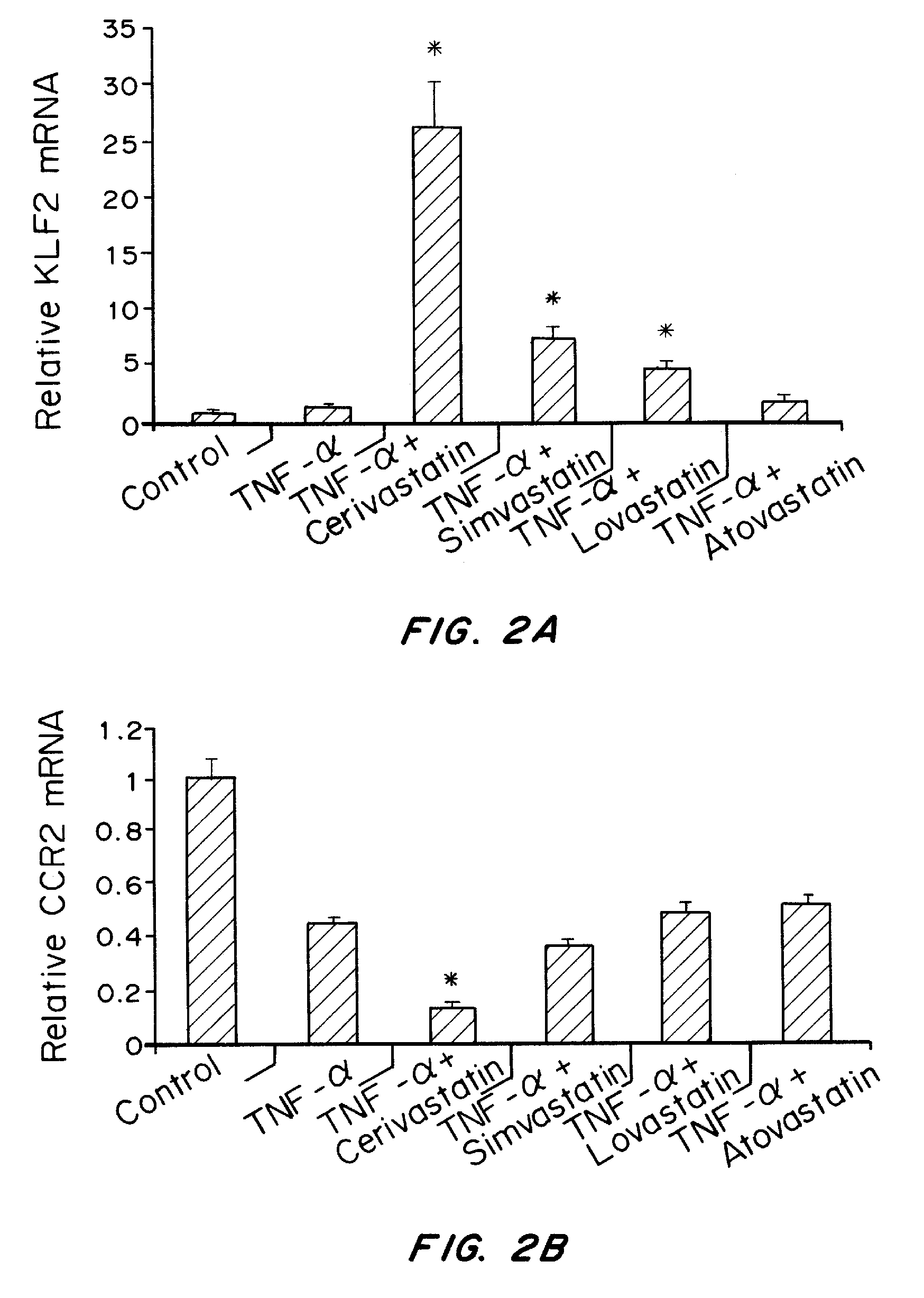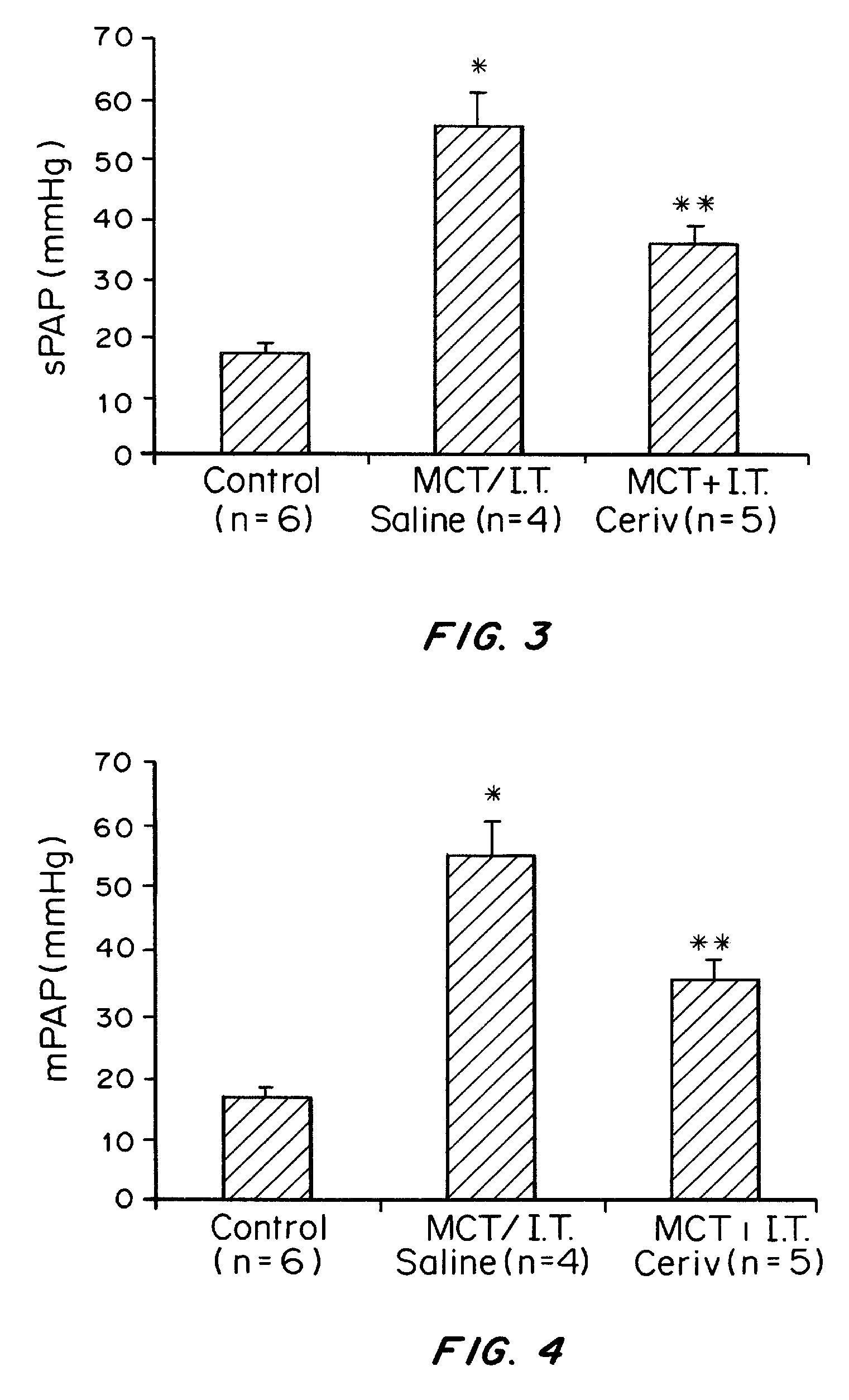Cerivastatin to treat pulmonary disorders
a technology of cerivastatin and pulmonary disorders, which is applied in the direction of aerosol delivery, spray delivery, peptide/protein ingredients, etc., can solve the problems of pulmonary hypertension (ph), increase in blood pressure, shortness of breath, etc., and achieve the reduction of the resting mean pulmonary arterial pressure (mpap), lessening or preventing pulmonary arterial hypertension, and reducing the thickness of the right ventricular wall
- Summary
- Abstract
- Description
- Claims
- Application Information
AI Technical Summary
Benefits of technology
Problems solved by technology
Method used
Image
Examples
example 1
Effect of Cerivastatin on DDAH2, DDAH1, KLF2 and CCR2 Levels
[0266]Materials and Methods
[0267]Human umbilical endothelial cells were seeded in 6-well plates (50,000 cells per well) and incubated with EGM (endothelial cell growth medium with bullet kit, Lonza) overnight. Then, triplicate wells were treated with indicated concentrations of cerivastatin in 2 ml of EGM. After 24 hours, total RNA was extracted using the RNeasy Kit (Qiagen, Valencia, Calif. After reverse transcription (RT) using the High Capacity cDNA Reverse Transcription Kit (Applied Biosystems, Foster City, Calif.), PCR was performed using an ABI Prism 7500 Sequence Detection System (Applied Biosystems, Foster City, Calif.) and QuantiTect SYBR Green PCR Master Mix (Qiagen, Valencia, Calif.). All reactions were carried out in triplicate, and each mRNA copy level was quantified using comparative CT method. Expression of actin was used as an endogenous control in all experiments and relative fold changes were calculated. A...
example 2
Demonstration of Efficacy in Rat Model
Abbreviations
[0278]Pulmonary Artery Hypertension (PAH)[0279]Monocrotaline (MCT)[0280]Intratracheal (I.T.)[0281]Pulmonary Artery (PA)[0282]Right Ventricle (RV)[0283]PA acceleration time (PAAT)[0284]inerventricular septum (IVS)
[0285]Materials and Methods
[0286]Animal Protocol
[0287]The Saint Joseph's Research Institute is accredited by the Association for Accreditation and Advancement of Laboratory Animal Care. Experiment animal use conformed to National Institute of Health and American Heart Association guidelines and was approved by the Institutional Animal Care and Use Committee of the Saint Joseph's Research Institute, in accordance with the “Guide for the Care and Use of Laboratory Animals” (NIH publication no. 85-23, National Academy Press, Washington, D.C., revised 1996).
[0288]PAH was induced in adult male Sprague-Dawley rats (˜375 to 425 g, n=12, Harlan Laboratories) by a single, subcutaneous injection of monocrotnil (MCT) (60 mg / kg; n=24). ...
PUM
| Property | Measurement | Unit |
|---|---|---|
| mass median aerodynamic diameter | aaaaa | aaaaa |
| tap density | aaaaa | aaaaa |
| mean pulmonary arterial pressure | aaaaa | aaaaa |
Abstract
Description
Claims
Application Information
 Login to View More
Login to View More - R&D
- Intellectual Property
- Life Sciences
- Materials
- Tech Scout
- Unparalleled Data Quality
- Higher Quality Content
- 60% Fewer Hallucinations
Browse by: Latest US Patents, China's latest patents, Technical Efficacy Thesaurus, Application Domain, Technology Topic, Popular Technical Reports.
© 2025 PatSnap. All rights reserved.Legal|Privacy policy|Modern Slavery Act Transparency Statement|Sitemap|About US| Contact US: help@patsnap.com



